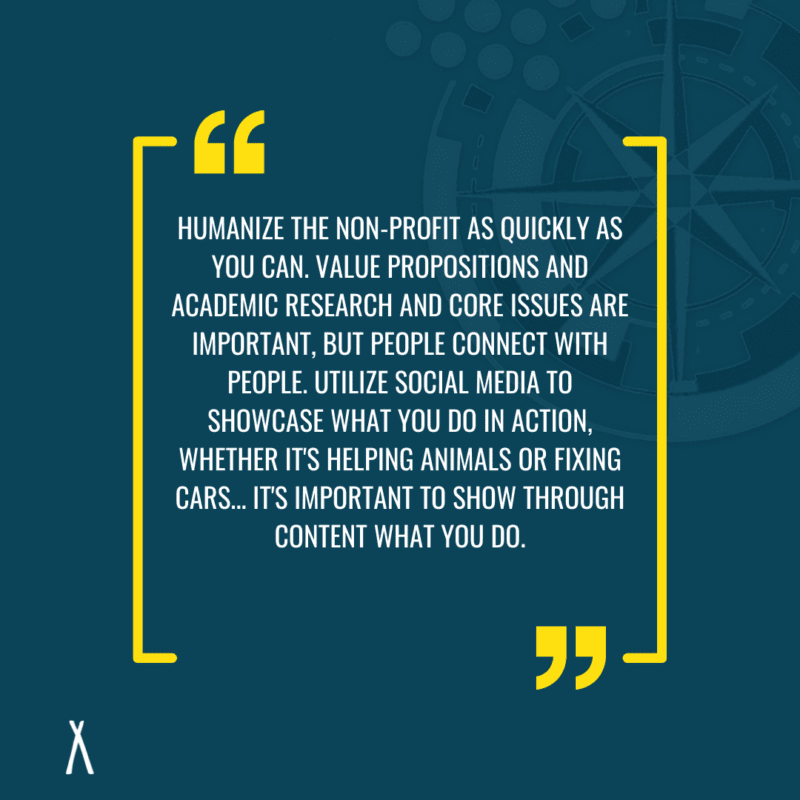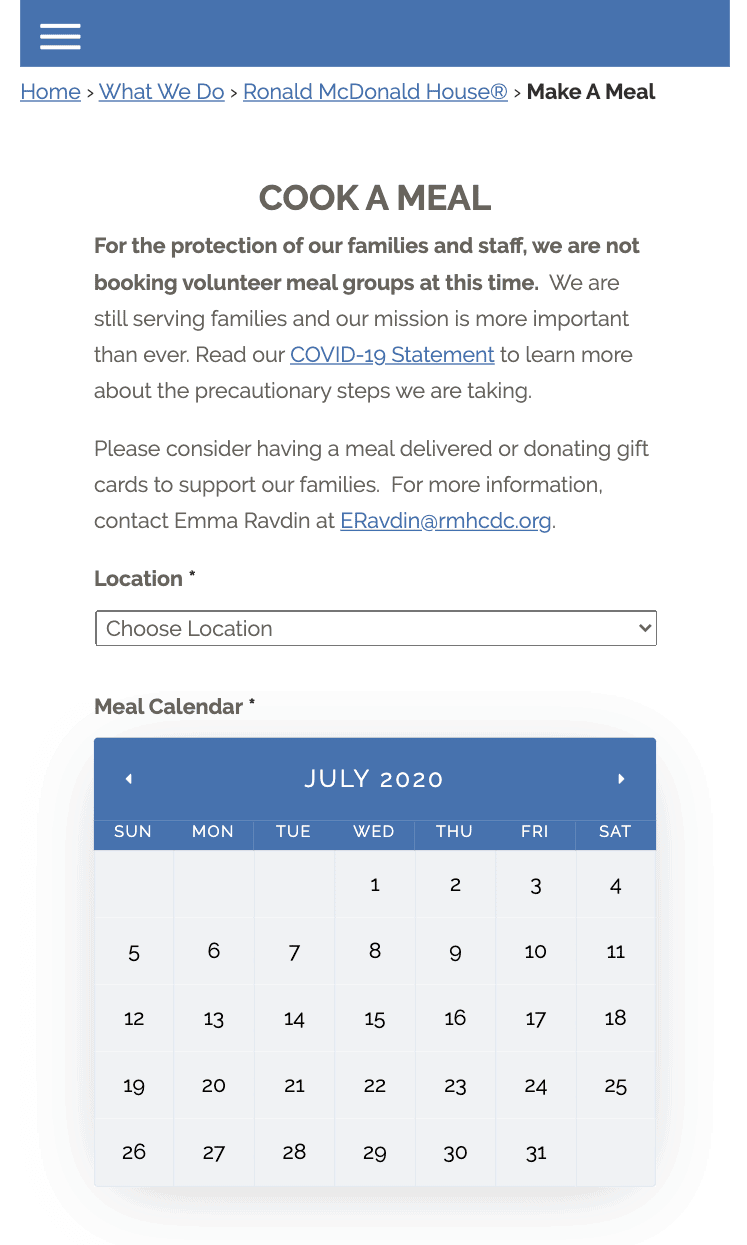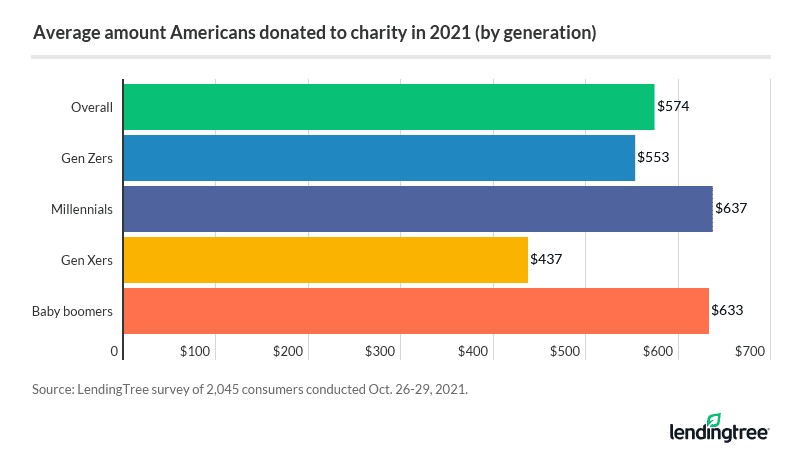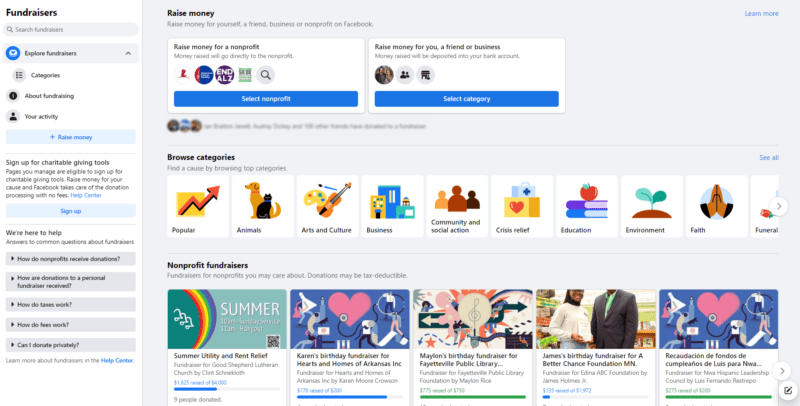26 Tips for Nonprofit Marketing in 2022

Nonprofit marketing can be a touchy subject.
With razor-thin margins, leadership team accountability, and fundraising efforts dominating the majority of your time and budget, the thought of putting a nonprofit marketing campaign together can quickly overwhelm small teams.
At the same time, using the same marketing tactics that for-profit businesses adopt is incredibly effective at re-engaging lapsed donors, sharing critical information about your organization, and gaining new supporters.
Fortunately, these marketing strategies come in many forms, including those that depend more on creativity and consistency than on a dedicated nonprofit marketing budget.
If you’re in the nonprofit sector, these marketing tips, tools, and statistics will help you take the first steps in building a message-focused campaign that spurs volunteers to take action.
Establish an Image Your Supporters Identify With
Max Rymer, President of NATIV3 and one of our resident nonprofit experts, stresses the importance of putting your story first:

1. Craft a Defining Mission Statement
Your mission statement should function as a quick overview of your nonprofit’s purpose and a call to action for others to stand behind that purpose. Take your time creating it, and don’t be afraid to spend extra time ensuring that it communicates exactly what you want to represent.
2. Highlight Success Stories
People want to know that the nonprofit organizations they support make a difference in the community. Be liberal in sharing examples of success stories that prove you are actively working to improve lives and provide specific examples of how donations further your mission.
3. Maintain Branding Across Platforms
Branding has serious power in human psychology, especially when you craft it so that supporters feel you reflect what they want and who they are. Color, words, and experience come together into something more significant than the sum of their parts, so be sure that you maintain consistency regardless of where you share your message.
4. Be Open About How Donations Are Spent
Being subversive about donations is a recipe for disaster, both in terms of public relations and legal consequences. Use your website and social media presence to build transparency and trust with your supporters.
5. (Cautiously) Chime in on Current Events
Cause marketing requires a keen awareness of when and how to speak on the current events relevant to your organization. It might feel safer to stay quiet when there’s controversy in your sector, but your supporters need to know that you’re willing to stand behind what you believe in.
Be diplomatic but assertive, using language and imagery that remains consistent with the brand persona you’re working to create.
Make Your Site Work as a Catalyst for Volunteers
When our team worked on the Ronald McDonald House Charities® of Greater Washington, DC project, we were thrilled that they were seeking a better platform for volunteers to schedule meal deliveries.

Not only did it ensure that families in need were getting hot, homecooked meals, but it also removed the technological barrier that might decrease a potential supporter’s interest in helping their cause.
Nonprofit websites do the double duty of telling your nonprofit’s story and ensuring that donors know exactly what is needed of them.
6. Form Connections Through Visual Storytelling
The use of the visual medium– specifically images and videos– continues to be one of the most effective means of making an impact on digital platforms, both in the nonprofit and for-profit sectors. This is because our brains are hardwired to interpret visual information at rapid-fire speeds, creating a nearly instantaneous emotional and logical reaction.
Your cause can bring unique and engaging experiences to your donors by weaving in visual content that matters to them, from community impact statistics to thought-provoking narratives about how your nonprofit is making a difference.
7. Make Resources Easily Shareable
Many nonprofits feature a directory of other community resources on their website to raise awareness of other community organizations available to help those in need. Adding social media sharing buttons to your site’s pages encourages visitors to share, furthering your marketing efforts and disseminating valuable information to a broader audience.
8. Ensure Your Calendar is Always Up-to-Date
It’s not a bad idea to maintain a running calendar of events on your homepage, especially if you’re looking for volunteers to sign up to help.
One method is integrating your public Google Calendar into your WordPress build. When you add information, it will automatically update your site and provide links that allow volunteers to drop the information into their own schedule with the click of a button.
9. Target Donors with Engaging Content
When you’re running a nonprofit, a content marketing strategy likely isn’t at the top of your priority list. Writing, editing, and publishing long-form content is incredibly time-consuming and isn’t necessarily a skill that you’ve honed.
That being said, you have so many options that don’t require you to spend hours crafting blog posts, from asking supporters to contribute why your cause matters to them to sharing a quick “glows and grows” video about your most recent charitable initiatives.
10. Learn Search Engine Optimization Best Practices
Once you have a plan for creating a stable content marketing cadence, you have to ensure that as many people see it as possible. You also want new donors to easily find your website when they’re searching for possible causes they’d like to support.
That’s where search engine optimization (SEO) comes in.
Search engines like Google use complicated algorithms to determine what websites are worth offering to their users, but there are measures you can take to give yourself an edge.
That includes conducting keyword research, following Google’s local search engine ranking guidelines, and updating old posts so they stay relevant to your nonprofit’s current marketing strategy.
11. Keep People on Your Site with Mobile Responsiveness
Mobile search has dominated global traffic since 2017, but it peaked this year at 58%. That means that a responsive website is crucial to avoid the judgment of 94% of people who say they don’t trust poorly designed websites.
Build Awareness with a Nonprofit Social Media Marketing Strategy
Social media is a gathering place for different audiences, many of whom are eager and willing to give money to support the things they care about most.
For example, 2021 was a hallmark year for social media as a vehicle for discovering nonprofits, organizations, and individuals worth donating to.
Forty-nine percent of Gen Z, which consists of anyone born after 1997, gave to a cause they found on social media, followed by 37% of Millenials, 25% of Gen X, and 14% of Baby Boomers.

Neglecting social media marketing leaves you out of the running for finding more supporters, more money, and more momentum for your nonprofit.
12. Ask Volunteers and Attendees to Send in Pictures
When you’re busy running an event, walking around taking photos is impossible. Instead, recruit your supporters to send in their own pictures through social media by tagging your organization in their social media posts or submitting them through a website portal.
If you try out the website portal, this is also an excellent opportunity to boost your email marketing efforts by providing an opt-in field in the submission form.
13. Encourage Fans and Followers to Share Posts
Want free positive publicity?
Inspire your supporters to build awareness about your organization by posting plenty of feel-good, multimedia content about your nonprofit’s mission, specific events, local legislation pertaining to your cause, and volunteer information.
14. Apply for a Facebook Donate Button
Since implementing the Facebook Donate Button, the social media platform has facilitated $2 billion in charitable giving for nonprofits and personal fundraising initiatives, constituting 1.3% of all online donations.
If you haven’t already, mark your organization as a nonprofit and apply for Donate Button eligibility. Once you’re approved, you’ll show up on Facebook’s fundraiser page, which opens the opportunity for supporters to host their own donation drives for your cause.

15. Post Video Content
We cannot stress enough the uptick in engagement that your nonprofit marketing campaigns stand to gain from creating video content.
A Google study found that 57% of people who actively research opportunities to donate money did so after watching an online video that inspired them to take action.
Furthermore, 80% reported that they found online video ads very useful in determining what causes they wanted to support.
16. Celebrate a Volunteer of the Month
Public shoutouts are incredibly powerful. It shows your supporters that you recognize their efforts while creating the right kind of feel-good content that begs to be shared amongst friends and family.
17. Increase Awareness About Your Blog Posts
Expand your content marketing efforts by sharing excerpts and links across social media platforms. It’s a great way to keep your feed fresh and boost awareness about your digital content.
Retain and Gain Supporters with Email Marketing Strategies
The first step of building an effective nonprofit marketing email strategy is building your subscriber list. There are several ways you can go about this, including:
- Embedded forms on your website
- Pop-up invitations
- Lead-capturing landing pages
- Donation page opt-ins
- Social media post with a link to sign up
- Phone calls
- Volunteer referrals
- and more!
18. Don’t Buy Email Lists
One thing to keep in mind is you should never, ever purchase an email list online. Services offering email campaign subscribers typically engage in pretty shady business practices, like selling scraped lists from other websites.
Buying lists also flies in the face of what nonprofits are all about– building human connections. The people on the list have no idea who you are, so they’re more likely to find your communications annoying.
The best-case scenario is that they ignore you. The worst-case scenario is that the bulk of your list sends you to the spam folder, impacting your deliverability and Sender Score.
It can also get you into legal trouble in the UK and EU, as it violates explicit consent laws outlined in the GDPR.
19. Send Invitations and Reminders for Online Events
A quick invitation to a scheduled Facebook Live or RSVP reminder in your subscriber’s inbox can do wonders for online event engagement.
20. Get Inspiration from For-Profit Business Email Marketing
A good marketing plan requires research into the trials and errors of others, including taking cues from successful campaigns outside of the nonprofit sector. Whether you raise donations or sell a product, the need for persuasion, appealing branding, and a healthy online reputation remains the same.
You can easily find marketing ideas by making notes of the emails you receive and what you like or dislike about them. Ask yourself what affected your decision to open them, then take the best stuff to fold into your nonprofit marketing campaign toolbox.
21. Drop Reminders About Recurring Donations
Keep your brand top of mind with a default reminder that you’ll be deducting a recurring donation sometime in the next few days.
Take it even further by including a quick thank you message and any new marketing videos or blog content you think they’ll enjoy.
22. Don’t Solicit Donations in Every Email
One of the aptest metaphors for successfully implementing marketing tactics is to treat your leads like romantic pursuits.
You wouldn’t show up to the first date with a ring in your pocket, ready to pop the question. It’s weird, off-putting, and predatory. Similarly, you shouldn’t crash land in your new lead’s inbox asking for donations. You have to take the time to woo them and prove why you’re worth their time.
Similarly, it’s in poor taste and a detriment to your bottom line to ask for donations in every single email. Your supporters don’t want to feel like ATMs. They want to know what you’re doing to further your mission and see the real-world effects of their philanthropy.
The best way to determine the correct ratio of fundraising appeals and general communications is to test the waters. Survey your subscribers, try A/B campaigns, and use email marketing tools to measure key performance indicators.
23. Explain Your Charitable Initiatives
Several times a year, send out a detailed email that goes through the charitable initiatives you’re currently focusing on, along with any celebrations, accolades, or achievements.
It’s an excellent way to keep existing subscribers engaged, show new subscribers what you do, and encourage leads to take the plunge.
Grants and Fundraising Trends
When it comes down to it, nonprofit marketing is about encouraging others to give to a cause you share a common passion for. If you don’t keep your finger on the pulse of fundraising trends, you risk missing out on opportunities to keep your supporters engaged.
24. Work with Other Nonprofits Locally and Globally
Networking opens doors to other nonprofits and volunteers seeking ways to express their altruism.
Spend time reaching out to other nonprofit organizations that function in a similar sphere of influence as yours and gauge their interest in teaming up to increase your impact.
25. Apply for Google Grants
If you want to try your hand at paid advertising, toss your name in the hat for Google’s Ad Grant program, which gifts qualified nonprofits with $10,000 a month in search ads.
26. Consider Direct Mail
This one’s a little surprising, but numbers don’t lie: Email and direct mail are remarkably effective at garnering higher response rates when thoughtfully integrated.
According to a report from USPS, direct mail “…boosted ROI by 20% when it was part of an integrated campaign… helped improve the lift of local ads by 44% and online campaigns by 62.%.”
Confronting the Challenge of Nonprofit Marketing
Nonprofits are close to our team’s heart because we see the good they do. We recognize the pure love that goes into your programs, the heart you have for uplifting others, and the tenderness with which you care for our communities. We also know that many causes are doing their best to navigate the often treacherous path of consistent, creative digital marketing without the budget available to many B2B and B2C organizations.
To that end, we encourage you to stop by our site often. Our team is committed to providing free online resources, content, and tools that serve as jumping-off points for nonprofits taking their first steps into the fray.